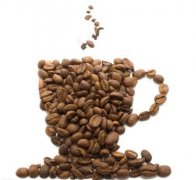How to identify the advantages and disadvantages of instant coffee
Coffee is Rubiaceae shrub, coffee tree fruit seeds, semicircle with grooves, fried into coffee powder, brown with special aroma, coffee powder can be drunk after boiling, if the juice is concentrated and then dried into instant coffee.
Fake and shoddy coffee is mixed with chicory root powder in real coffee, or roasted and crushed grains and beans. Real coffee contains caffeine and has a special aroma. Poor-quality coffee is generally out of date or lax sealing caused by moisture caused by caking, obvious changes in aroma and taste, often the aroma disappears, drinking has a peculiar smell. There is also coffee powder milled as instant coffee, in fact, the two processes are different, instant coffee is concentrated coffee water, spray drying, the process is complex, immediately dissolved after brewing, no floating, no dregs, and although the coffee powder is ground very fine, there is floating matter after brewing, there are dregs, can not be swallowed, can only be blown to drink. It is also common to alter the shelf life of instant coffee packaging. The shelf life of instant coffee is usually two years.
Instant coffee is coffee beans roasted and crushed to get pure coffee, and then extracted and vacuum concentrated into powdered coffee, which can be brewed at any time and dissolve in boiling water. Sensory identification of the quality of instant coffee can be divided into two stages: before brewing and after brewing.
(1) pre-brewing identification?
High-quality instant coffee-brown to dark brown due to different varieties and processes; irregular particles about 2 mm in size, mixed with some fine powder; unique aroma of coffee due to Maillard reaction during stir-frying. ?
Inferior instant coffee-dark in color, some iron black; caking or agglomeration in tissue due to moisture or other reasons; coffee roasting flavor is weak or can not be smelled at all, replaced by a strong scorched flavor. ?
(2) Identification after brewing?
Good quality instant coffee-completely dissolved, free of dregs and suspended matter; the soup juice is brown and bright; it has a strong coffee aroma; it has a pleasant bitter and sour taste after adding sugar.
Inferior instant coffee-after dissolving, there is sediment at the bottom of the cup, and the soup is dark and brown-black (at the same concentration); the aroma is light, but the scorched taste is strong; after adding sugar, the bitter taste and sour taste are strong, especially the aftertaste is hard.

Important Notice :
前街咖啡 FrontStreet Coffee has moved to new addredd:
FrontStreet Coffee Address: 315,Donghua East Road,GuangZhou
Tel:020 38364473
- Prev

There is also a way to tell whether the coffee is delicious or not when brewing coffee.
The easiest way to make delicious coffee is to sigh the filter paper filter pawn.
- Next

Basic knowledge of how to distinguish between good and bad coffee beans
Because coffee contains caffeine, it can excite the central nervous system of the brain, refresh and eye-catching after drinking, eliminate fatigue and drowsiness, and improve work efficiency. Coffee has a unique aroma and color, giving people the enjoyment of color, aroma, taste and so on. Therefore, coffee is deeply loved by the masses and has become one of the main drinks in people's daily life. How to distinguish between good and bad coffee because it contains
Related
- Beginners will see the "Coffee pull flower" guide!
- What is the difference between ice blog purified milk and ordinary milk coffee?
- Why is the Philippines the largest producer of crops in Liberia?
- For coffee extraction, should the fine powder be retained?
- How does extracted espresso fill pressed powder? How much strength does it take to press the powder?
- How to make jasmine cold extract coffee? Is the jasmine + latte good?
- Will this little toy really make the coffee taste better? How does Lily Drip affect coffee extraction?
- Will the action of slapping the filter cup also affect coffee extraction?
- What's the difference between powder-to-water ratio and powder-to-liquid ratio?
- What is the Ethiopian local species? What does it have to do with Heirloom native species?

